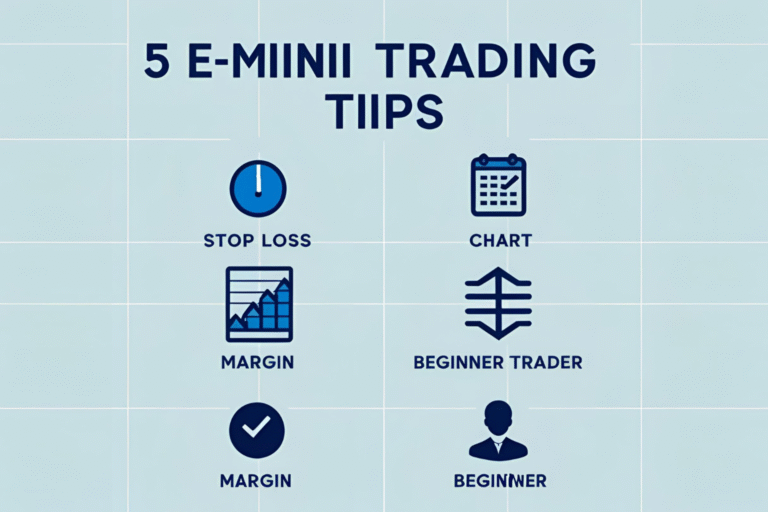Common Mistakes in E-mini Trading and How to Avoid Them
E-mini futures trading offers significant profit potential—but it also comes with risk, especially for beginners. Many traders make the same costly errors when trading contracts like the E-mini S&P 500 (ES) and Nasdaq 100 (NQ). Understanding these common mistakes—and how to avoid them—can greatly improve your chances of long-term success.
1. Trading Without a Plan
Mistake: Jumping into trades based on gut feeling or emotion.
Why it hurts: Leads to inconsistent decisions, overtrading, and blown accounts.
Fix: Create a clear trading plan that outlines:
- When to enter and exit trades
- What setups you’ll trade
- How much risk you’ll take per trade
Stick to your rules no matter what.
2. Ignoring Stop-Loss Orders
Mistake: Trading without a stop-loss or moving stops further away in hope of a reversal.
Why it hurts: One bad trade can wipe out weeks or months of gains.
Fix: Always use a stop-loss based on market structure or indicators like ATR.
Example: In ES, a 6-point stop might be suitable for a scalp setup during low volatility.
3. Overleveraging Small Accounts
Mistake: Trading too many contracts with insufficient capital.
Why it hurts: Amplifies both gains and losses. Margin calls and account wipeouts are common.
Fix: Risk no more than 1–2% of your capital per trade. Trade smaller until you build consistency.
4. Overtrading During Volatile News
Mistake: Trading aggressively during macro events like CPI, FOMC, or NFP releases.
Why it hurts: Slippage, spread widening, and unpredictable moves can lead to fast losses.
Fix: Sit out major events if you’re new. Watch how the market reacts and trade after volatility settles.
5. Lack of Journaling and Review
Mistake: Not recording trades or learning from past mistakes.
Why it hurts: You repeat the same errors and fail to evolve as a trader.
Fix: Use a trading journal to log:
- Entry/exit points
- Chart screenshots
- Emotions and thought process
- What worked and what didn’t
Review it weekly to refine your approach.
Bonus Tip: Avoid “Revenge Trading”
After a loss, many traders double down on risk to “win it back.” This emotional reaction usually leads to deeper losses. Accept losses as part of trading and stick to your plan.
FAQs
How many trades should a beginner take per day?
1–3 high-quality setups per day are enough. Focus on quality over quantity.
Is E-mini trading too risky for new traders?
It can be if risk isn’t managed. With proper discipline and education, it’s manageable.
What are warning signs of overtrading?
Feeling emotionally drained, chasing setups, and placing trades without clear reasons.
Can using a simulator help avoid mistakes?
Yes. Practicing in a demo account helps you build skills and confidence without real financial risk.
What’s the biggest psychological mistake new traders make?
Lack of patience. Many enter too early or exit too late due to fear or greed.



